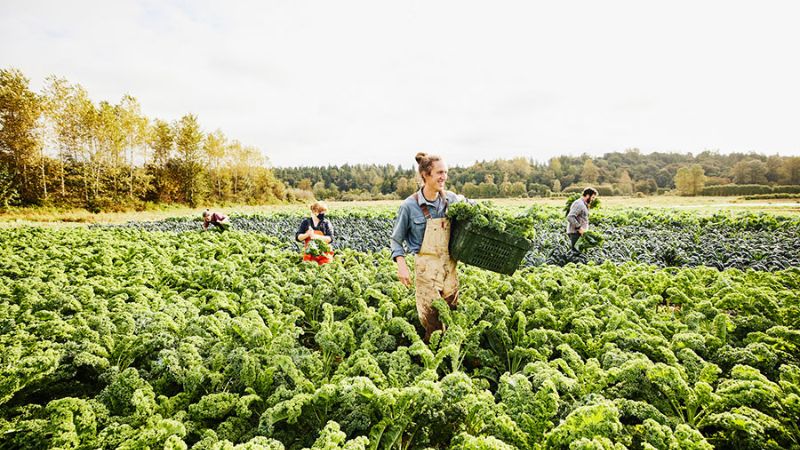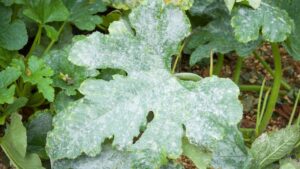Embarking on the journey of sustainable organic farming entails a commitment to the health of our planet, the vitality of our crops, and the well-being of our communities. In our quest for a greener tomorrow, adopting sustainable practices becomes paramount. This guide delves into ten actionable methods to foster healthy soil, thriving crops, and resilient communities. From embracing natural fertilizers to promoting biodiversity and water conservation, each practice contributes to a harmonious ecosystem. By prioritizing sustainability, we not only safeguard the environment but also ensure the long-term viability of agricultural systems. Let’s cultivate a future where every harvest enriches the earth and sustains generations to come.
10 Sustainable Organic Farming Practices for Healthy Soil, Crops, and Communities
1. Crop Rotation
Crop rotation involves planting different crops in the same area over a sequence of growing seasons. This practice helps to maintain soil fertility, control pests and diseases, and prevent soil erosion. By rotating crops, farmers can break pest and disease cycles, as well as replenish soil nutrients naturally. For example, leguminous plants like peas and beans fix nitrogen in the soil, benefiting subsequent crops. Crop rotation also promotes biodiversity, creating a more resilient ecosystem that supports healthy soil and crop growth.
2. Cover Cropping
Cover cropping involves planting non-commercial crops during fallow periods to cover and protect the soil. These cover crops help prevent soil erosion, suppress weeds, and improve soil structure. Legumes like clover and vetch add nitrogen to the soil through nitrogen fixation, reducing the need for synthetic fertilizers. Additionally, cover crops act as a habitat for beneficial insects and microorganisms, enhancing overall soil health and fertility. Incorporating cover crops into farming practices contributes to sustainable soil management and fosters healthier crop yields.
Also Read: 11 Tips To Prevent Common Garden Diseases
3. Composting
Composting is the process of decomposing organic materials into nutrient-rich humus, which can then be used as fertilizer or soil amendment. By recycling organic waste such as crop residues, manure, and kitchen scraps, farmers can create a valuable source of nutrients for their soil. Compost improves soil structure, increases water retention, and encourages beneficial microbial activity. Moreover, composting helps reduce greenhouse gas emissions by diverting organic waste from landfills. Implementing composting practices in organic farming promotes circularity, sustainability, and soil health enhancement.
4. Mulching
Using organic materials like straw, leaves, or grass clippings to cover the soil’s surface is known as mulching. This protective layer helps conserve soil moisture, suppress weeds, and regulate soil temperature. Mulch also gradually decomposes, adding organic matter to the soil and enriching its fertility. By reducing evaporation and soil erosion, mulching supports healthy root development and enhances nutrient uptake by plants. Additionally, mulch provides habitat for beneficial organisms like earthworms, contributing to overall soil health and vitality. Incorporating mulching techniques into farming practices promotes sustainable soil management and improves crop productivity.
5. No-Till Farming
No-till farming is a method of planting crops without tilling or plowing the soil. This practice helps preserve soil structure, minimize erosion, and retain moisture. By leaving crop residues on the soil surface, farmers protect the soil from erosion and nutrient loss. No-till farming also promotes microbial activity and carbon sequestration, enhancing soil health and fertility over time. Additionally, reduced tillage decreases fuel consumption and greenhouse gas emissions, making it an environmentally friendly farming practice. Embracing no-till techniques contributes to sustainable soil management and supports long-term agricultural productivity.
6. Agroforestry
Agroforestry integrates trees and shrubs into agricultural landscapes to create a diverse and resilient ecosystem. This practice helps improve soil fertility, conserve water, and enhance biodiversity. Trees provide shade, shelter, and nutrient cycling benefits to crops, while their root systems help prevent soil erosion. Agroforestry systems also offer additional sources of income through timber, fruit, and other non-timber forest products. By combining agriculture with forestry practices, agroforestry promotes sustainable land use and supports healthy soil and crop growth. Implementing agroforestry techniques fosters ecological resilience and contributes to sustainable farming practices.
7. Water Conservation
Water conservation practices aim to minimize water usage and maximize efficiency in agricultural operations. Techniques such as drip irrigation, rainwater harvesting, and soil moisture monitoring help optimize water use and reduce waste. By applying water directly to the root zone, drip irrigation systems minimize evaporation and runoff, conserving water resources. Rainwater harvesting systems capture and store rainwater for later use, especially during dry periods. Proper soil moisture monitoring ensures that crops receive adequate hydration while avoiding waterlogging or drought stress. Implementing water conservation measures in organic farming promotes resource efficiency and environmental sustainability.
8. Integrated Pest Management (IPM)
A comprehensive approach to pest management, integrated pest management (IPM) places a strong emphasis on monitoring, prevention, and natural pest suppression techniques. IPM strategies include using beneficial insects, crop rotation, and cultural practices to manage pest populations effectively. By reducing reliance on synthetic pesticides, IPM helps preserve beneficial insects and minimize harm to the environment. Implementing IPM techniques also promotes long-term pest management solutions and reduces the risk of pesticide resistance. By integrating multiple pest control methods, farmers can maintain ecological balance and support healthy soil and crop ecosystems.
9. Biological Pest Control
Utilizing diseases, parasites, or natural predators to manage insect populations is known as biological pest control. Beneficial organisms such as ladybugs, predatory mites, and parasitic wasps help keep pest populations in check without the need for chemical pesticides. By promoting natural predators and parasites, farmers can effectively manage pests while minimizing harm to beneficial insects and other non-target organisms. Biological pest control methods are environmentally friendly and support biodiversity in agricultural landscapes. Integrating biological pest control into farming practices contributes to sustainable pest management and healthier soil and crop ecosystems.
10. Community Engagement
Community engagement is essential for promoting sustainable farming practices and building resilient agricultural systems. Farmers can involve local communities through initiatives such as community-supported agriculture (CSA), farmers’ markets, and educational programs. By connecting consumers with local food producers, community engagement fosters appreciation for sustainable farming practices and supports small-scale farmers. Additionally, community involvement provides opportunities for knowledge sharing, collaboration, and collective action to address environmental challenges. By working together, farmers and communities can create a more sustainable and resilient food system that benefits both people and the planet.
Also Read: The 9 Organic Gardening Hacks To Make Your Life Easier
Conclusion
Embracing sustainable organic farming practices isn’t just about nurturing soil and crops; it’s about fostering a holistic ecosystem where communities thrive. By prioritizing sustainability, we safeguard our environment, promote healthier food systems, and ensure a resilient future for generations to come. Let’s continue to cultivate a world where the health of the land is intricately linked to the well-being of communities, and where each harvest brings us closer to a greener, more sustainable tomorrow.
FAQs
How does organic farming benefit soil health?
Organic farming enriches soil health by minimizing chemical inputs, promoting microbial activity, and enhancing soil structure through practices like composting and crop rotation.
What role do sustainable farming practices play in community well-being?
Sustainable farming practices strengthen communities by preserving local ecosystems, providing healthier food options, and fostering economic resilience through small-scale agriculture initiatives.




